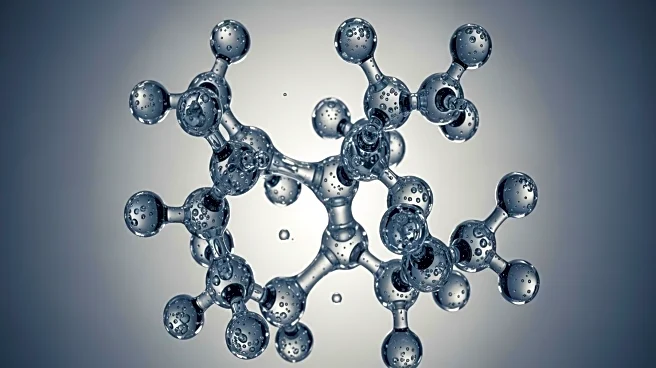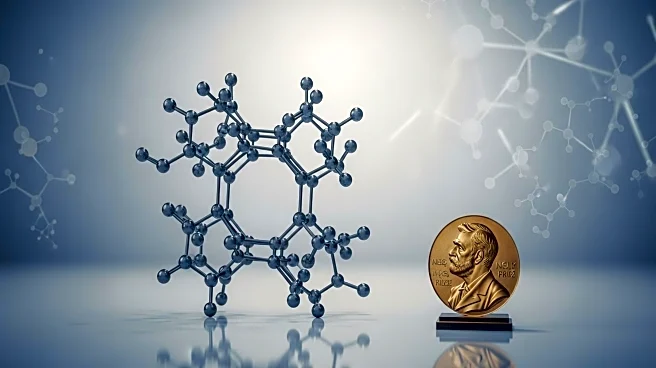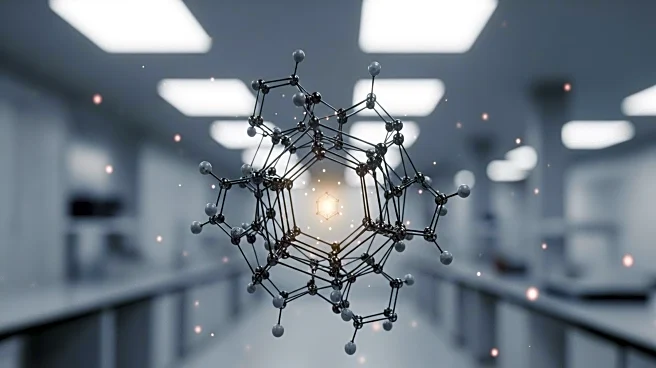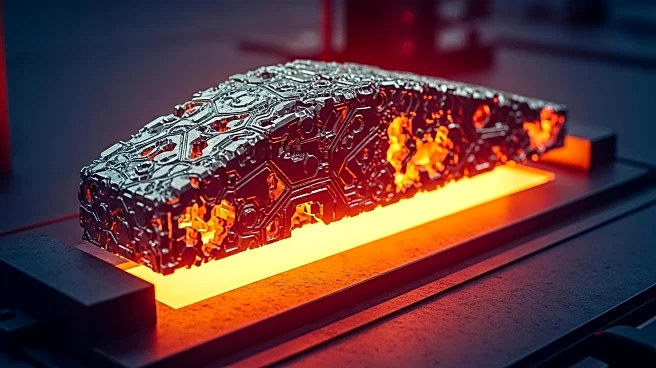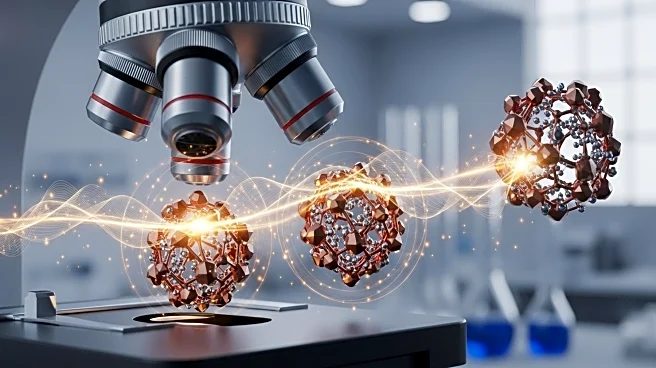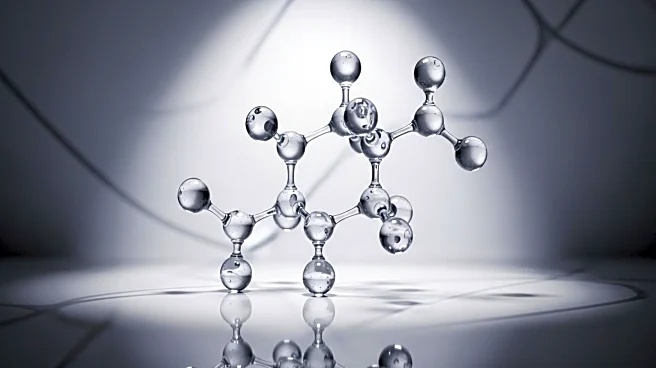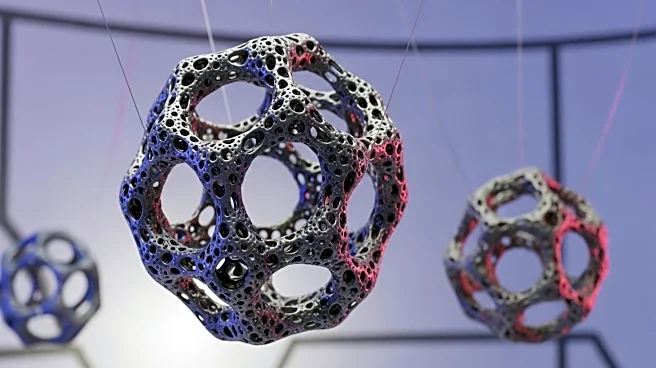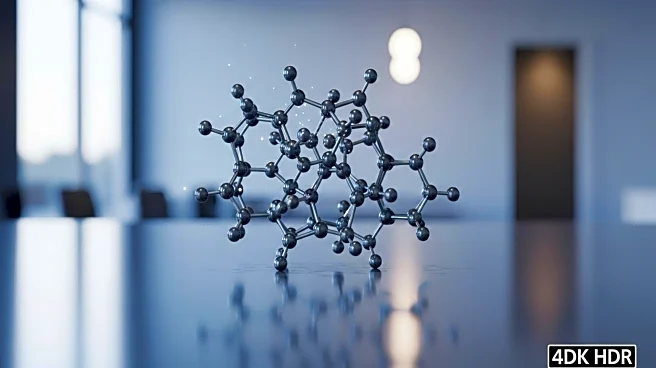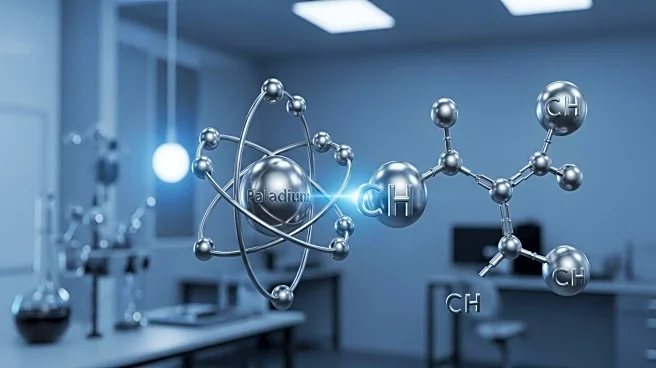What is the story about?
What's Happening?
A study published in Nature has introduced a hybrid calorimetry-simulation model to better understand the mixing enthalpy of molten salts, specifically focusing on LaCl3 mixed with a LiCl-KCl eutectic melt. The research combines experimental calorimetry with ab initio molecular dynamics (AIMD) and polarizable ion model molecular dynamics (PIM-MD) simulations. The study found that the AIMD simulations provided a more accurate description of intermolecular interactions compared to PIM-MD, although both overestimated the experimental values. The new model, MIVM+Calorimetry+AIMD, successfully reproduced the measured mixing enthalpy, offering insights into the solvation structure and non-ideal mixing behavior of molten salts.
Why It's Important?
Understanding the mixing behavior of molten salts is crucial for various industrial applications, including nuclear reactors and metal processing. The ability to accurately predict mixing enthalpy can lead to more efficient and safer processes. This research provides a framework for improving the thermodynamic models used in these industries, potentially leading to cost savings and enhanced performance. The study also highlights the importance of combining experimental and computational approaches to achieve more reliable results.
What's Next?
Further research may explore the application of the MIVM+Calorimetry+AIMD model to other molten salt systems, potentially expanding its use in different industrial contexts. The model's sensitivity to input parameters suggests that refining these inputs could enhance its predictive accuracy. Additionally, collaborations with industry partners could facilitate the integration of this model into practical applications, improving the design and operation of systems that rely on molten salts.
Beyond the Headlines
The study underscores the potential for advanced simulation techniques to bridge gaps in experimental data, offering a more comprehensive understanding of complex chemical systems. This approach could be extended to other areas of materials science, fostering innovation and discovery in fields that require precise control of chemical interactions.
AI Generated Content
Do you find this article useful?
